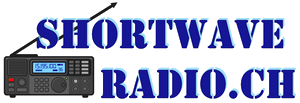Inhaltsverzeichnis
Sony Corporation, Tokyo
The Japanese electronics company was founded in Tokyo in 1946, it became one of the most important manufacturers of radio and television sets, digital and video cameras and was a pioneer in miniaturisation.
Company history
On 7 May 1946, the company was founded Tokyo which was still marke by war as Tokyo Tsushin Kogyo Kabushiki Kaisha (Tokyo Telecommunications Engineering Corporation). It is reported that one of the first products was an electric rice cooker, later an electric heating pad was to the production range. At the end of 1946, the company developed transmitters for the Japanese broadcaster NHK from parts from military sets. By 1949, the company had succeeded in developing an audio tape and a corresponding reel-to-reel tape recorder, the G-type.
The company called Totsuko initially named its audio tape Soni-Tape, this product name was so successful that the company was renamed Sony in 1958. With the miniaturisation of the first tape recorder to become the H-Type, Sony already took a first step in the direction of miniaturisation, in which the company later had great success. With the TR-55 transistor radio, Sony developed the first small transistor radio in 1955.
With the development of colour television, Sony engineers worked on colour picture tubes, the development of the Sony trinitron tube took some time until 1967, it resulted in a superior picture quality. From 1969, video recorders with the U-Matic system were introduced, they were widely used in the professional sector; in the home sector, JVCs VHS remained in front.
In 1979, Sony caused a sensation with the portable miniature cassette player Walkman, and at the same time, together with Philips, the Compact Disc was introduced in 1983. The magneto-optical Minidisc found only moderate success in Europe and was superseded by mp3 players.
Sony had never targeted the commercial communications receiver market, nor the amateur radio market. The travel receiver ICF-5900W with the combination of a linear fine tuning dial and a crystal calibrator was a first step, until 1978 the legendary ICF-6800W, equipped with a digital frequency counter, appeared and soon became the dream receiver of many shortwave listeners. A milestone was the ICF-2001, the first microprocessor-controlled shortwave receiver, the breakthrough in reception performance was the ICF-2001D.
Sony even improved its reputation with masterpieces of miniaturisation, the ICF-7600D was the first truly SSB-capable travel portable with digital display & memories, followed by extremely miniaturised travel radios, barely larger than a tape cassette, with sophisticated alphanumerically labelled memories & world time clock functions, designed to simplify shortwave listening even more.

